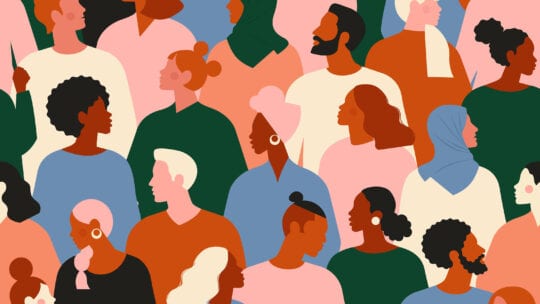
[Editor's Note: The following essay is part of PRNEWS' celebration of Global Diversity Awareness Month.]
This year’s racial injustices and the global pandemic exposed inequities embedded for centuries in the US justice, education, health care and economic systems. As PR pros, it is our responsibility to bring awareness of the value of diversity and more important, inclusion, to our teams, as well as within our professional organizations.
The makeup of the US PR industry is predominantly White (82.6 percent), with 8.1 percent Black or African Americans, 6.2 percent Asian Americans and 12.5 percent Hispanic or Latino, according to the U.S. Bureau of Labor Statistics.
On the contrary, the US population is becoming more heterogeneous–one in three Americans is projected to be a race other than White by 2060, U.S. Census Bureau data shows.
These data alone demonstrate the business imperative of building a pipeline of diverse PR pros and storytellers.
PRSA's Activities
To meet this challenge, PRSA and PRSA’s Diversity and Inclusion Committee are leaning in to activities that will transform the diversity and inclusion (D&I) landscape in our organization and the industry at large.
In 2019, the Committee led an effort to better understand members’ thoughts, behaviors, and attitudes about D&I. It launched an 11-month, comprehensive, multi-faceted research program whose findings were used to build a three-year PRSA D&I Strategic Plan.
The plan seeks to dramatically change the leadership, pipeline recruitment and recognition of diverse professionals in PRSA. The strength of our strategic plan lies in its ability to measure and hold the organization accountable. We know what we say is less interesting than what we do.
But this strategy is not one that only PRSA can utilize. Organizations, large and small, can execute an effort to better understand their internal D&I practices, and seek change. Communicators can lead in these efforts.
Here are several strategies:
What to Do
- Position D&I as an imperative with your CEO’s statements and public profile. Help the CEO understand the importance of not only positioning your organization positively in the D&I space, but having courageous conversations when action is needed. Examine the organization’s mission, vision and values. Look at the role of D&I in your brand’s purpose. Seek opportunities for D&I to permeate the culture of your company.
- Establish and promulgate inclusive language guides. Help leaders understand the multitude of opportunities to get smarter about engaging with diverse publics. There are free and available tools. Use them. Make sure that employees, customers, and external stakeholders know that you’re serious about D&I, and it’s reflected in your work.
- Seek new voices in PR. It’s not enough to say that you support diversity. Listen. Get to know your organization, employees and customers. Solicit their stories. Their experiences will provide invaluable context to deepen your storytelling.
- Partner with HR. Work with leadership and encourage unconscious and implicit bias training. Be the organization's conscience. Connect with your Employee Resource and Affinity Groups not just to push a program that checks off D&I from the to-do list, but to understand your groups’ needs and desires. Consider a diverse range of partners and involve them in internal D&I planning processes.
- Advocate for diverse professionals. Advocate for investment in the advancement and growth of diverse employees with mentorship and leadership development programs and special recognition initiatives. Take action to ensure equity across the organization at all levels.
Lean on PR's Strengths
Communicators help others find their voice, advance dialogue and discussion and get beneath the surface to understand underlying issues and challenges. Why not use the communicator's strengths to help our industry and organizations be better during this moment? PR professionals absolutely can use their influence to help promote a culture that embraces D&I.
Making sure we foster respect, mutual understanding, equality and inclusion, and not exclusion or division within our organizations, is the only way to move forward and survive.
Felicia Blow and Andrea Gils Monzón are co-chairs of PRSA's Diversity & Inclusion Committee
